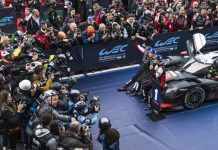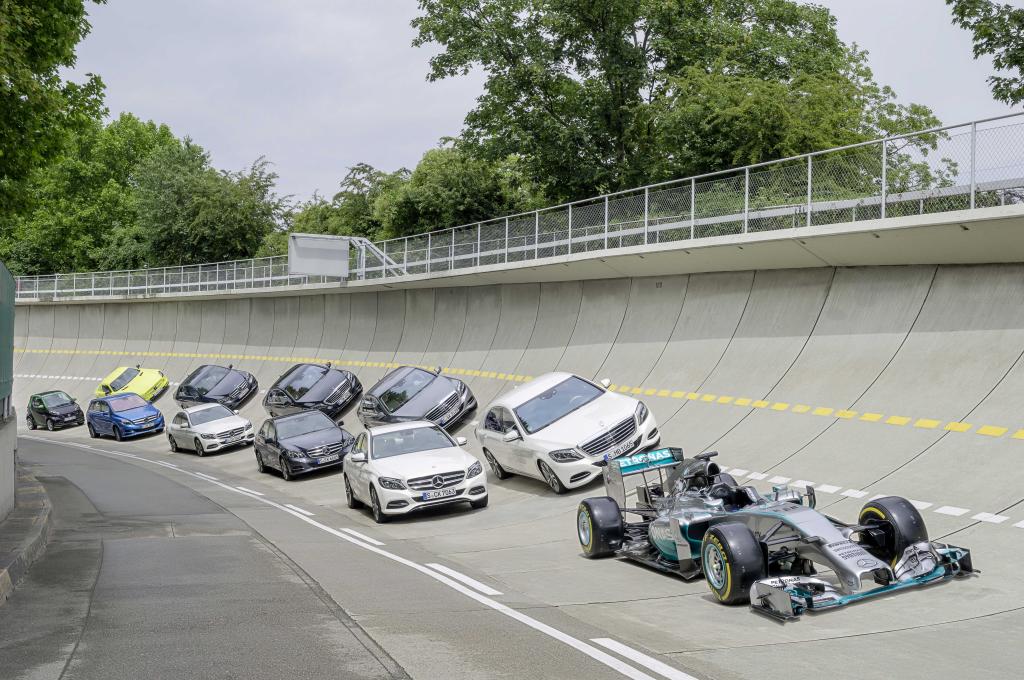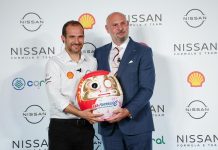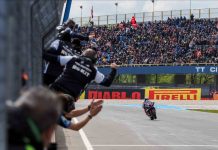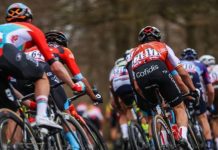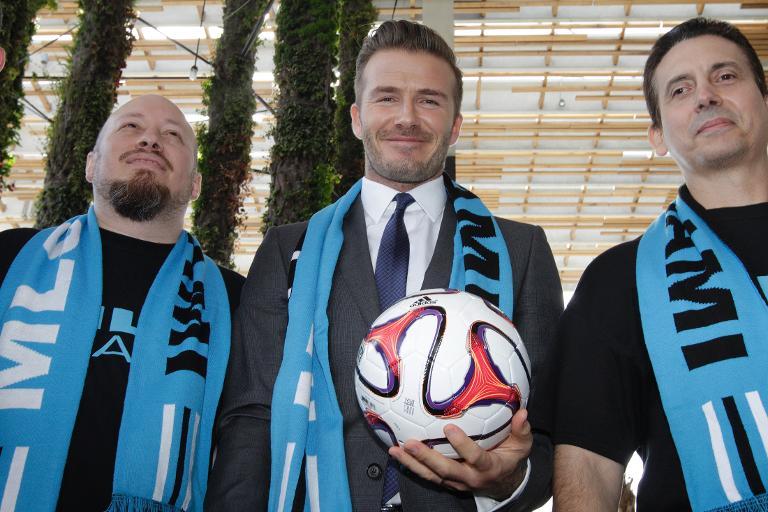In Formula 1 Racing, performance is everything. But under the new rules for 2014, minimal lap times can be achieved only by maximum efficiency. A challenge Mercedes-Benz road car development has been confronted with since day one. As MERCEDES AMG PETRONAS continues to lead the way in the 2014 season, it’s time to take a look where engineers at Brackley and Stuttgart find synergies.
“We are often asked the question of whether there is actually any technology transfer between race and road car engineering. The answer is resoundingly ‘yes’ – but it’s a more subtle process than bolting bits from one car onto another”, says Paddy Lowe, Executive Director (Technical) at MERCEDES AMG PETRONAS. “There are examples of direct transfer – for instance the NANOSLIDE technology used to coat cylinder bore surfaces. And then there is indirect transfer, where F1 serves as a research laboratory for developing new solutions and showing the world what is possible.”
“Technologies like direct fuel injection found their way in to series production via the Silver Arrows of the 1950s”, adds Prof Thomas Weber, Member of the Daimler Board of Management responsible for Group Research and Head of Mercedes-Benz Cars Development. “Today, the challenges and complexities faced by F1 are quite similar to those faced by us in designing and developing advanced road cars like the S 500 PLUG IN HYBRID: To translate efficiency into superior performance.”
After entering Formula 1 as a works team in 2010, Mercedes-Benz did what it does best: worked hard and invested in engineering. While the team built itself towards on-track competitiveness, a technical challenge for 2014 had begun where the in-house engineering expertise of Mercedes-Benz was to play a decisive role. A development loop was completed from production to KERS (2009), the first foray of hybrids into F1, to production (AMG SLS Electric Drive) to a fully Hybrid F1 2014 (W05 Hybrid). Partnerships from projects such as KERS nurtured to achieve in-house expertise and on-track leadership. Development was rapid:
-
The first development system of KERS in 2007 weighed 107 kg, and achieved an energy efficiency of 39%.
-
By 2009, it was at 25.3 kg and 70% efficiency.
-
By 2012, the system weighed less than 24 kg and achieved 80% efficiency.
As the 2014 season approached, cooperation between Mercedes AMG Petronas and Mercedes-Benz Cars intensified. Today, key areas of cooperation are:
-
Hybrid: As F1 has to make drastic steps in improving efficiency, so does the car community. The development teams of both sides are in constant contact in their quest of further improving efficiency. Both benefit from the in-house competence in regard to technologies like electric motors, batteries, and control systems, as do the other teams successfully racing the F1 Mercedes-Benz power unit. As the W05 Hybrid is about 35 percent more efficient than its predecessor, so is the upcoming S 500 PLUG IN HYBRID: it offers 325 kW of power and 650 Nm of torque, sprints in only 5.2 seconds from zero to 100 kph, and can go 33 km on electric power alone. It has certified fuel consumption of 2.8 litres for 100 kilometres. And it achieves excellent efficiency in real word driving as well. Key elements for this stunning performance are a bi-turbo V6 and a highly sophisticated hybrid powertrain. The next step in hybrid development will be wireless recharging of the battery. This “unplugged” technology will go into fleet testing with the S 500 Plug in HYBRID soon, in order to offer a real S-Class solution in terms of comfort and ease of operating in the near future. The system consists of two components: a secondary coil integrated into the under tray of the car and a primary coil integrated into a floor plate that can be placed on a garage floor for instance. Electrical energy is transmitted contact-free without the need for a cable, at a power rate of 3.6 kW and with a degree of efficiency of 90%. Daimler and BMW have agreed on jointly developing common technology for wireless recharging high-voltage batteries of electric drive and plug-in hybrid vehicles.
-
Simulation: Developing and delivering accurate simulation are crucial to successful performance. Modelling performance trade-offs, establishing the performance authority of systems on the car, understanding which factors are most important for delivering lap time improvements required the F1 engineers to develop new simulations to get the right answers. Simulation tools for the production and assembly process saw the team successfully deliver 5,000 components and a total of nearly 15,000 drawings in four months. Strong Daimler expertise in ride programmes, tyre modelling and support with development of the DIL (driver in the loop) tool using existing expertise and technologies was employed by the race team. F1 is driving innovation in these areas in terms of process, how to optimise for relevant problems and the techniques that are developed – it’s not necessarily what the F1 engineers are developing but how they are doing it that is transferable.
Aerodynamics: At first sight the aerodynamic design of F1 cars and road cars don’t have much in common, however both use many similar tools, in particular the wind tunnel and CFD (Computational Fluid Dynamics). Joint research and technical projects with Mercedes Benz include technology discovery and information exchange in certain areas, f.i. CFD techniques.
-
Turbocharging: The development journey for the 2014 season began in 2011 with external suppliers but was taken in-house after the first year as the in-house knowledge and pace increased. This decision was driven by aggressive performance targets (and timescale) and enabled by the in-house expertise at Daimler. Achieving high-rpm harmony of the system components (optimising dynamics) was crucial to the development journey. Daimler support was crucial for specifying development tools (eg. gas stand installation at Brixworth) and problem solving assistance with specific technical challenges.
-
Tribology (lubrication): In order to minimise internal friction in the engine, the work focuses on two areas: lubrication and surfaces. The 2014 internal combustion engine and its lubricants have been designed in parallel – they are tailor-made solutions. The 1.6 litre turbo engine runs hotter than the previous V8 and sees around 10% more duty per cylinder. Oil must sometimes meet contradictory requirements to act as a coolant, whilst giving good wear protection but low friction properties. Together with PETRONAS, the F1 team developed a blend of synthetic base oils – with complex additive packages to enable the oil to be both a lubricant with good wear protection and low frictional performance. Since 2010, they have developed together over 50 engine, transmission and hydraulic oils. Additionally, there has been a lot of learning for PETRONAS from race track to road and vice versa. Furthermore, this technological partnership has been complemented by a strategic business alliance with Mercedes-Benz, extending the partnership from the track to the road. The cutting-edge technology developed in the proving ground of Formula One drives the creation of class-leading lubricants for passenger cars, including high-performance Mercedes-AMG road cars.
-
Tribology (surfaces): The development of surfaces breaks down into two areas: surface characteristics and coatings. When it comes to coatings, engineers are looking at changing the material of the surface to improve the way in which it interacts with its environment. For example, an aluminium engine block has a poor tribological surface, so that surface is changed with a coating that has the desired properties. This is where NANOSLIDE is used by the new Mercedes F1 V6 Turbo engine because the friction between piston and bore liner is one of the single biggest frictions in the engine – and of paramount importance.Nanoslide was developed starting in the year 2000 by Daimler and is protected by more than 90 patent families and over 40 patents. Since 2006, this technology has been employed for over 200,000 engines so far. Initially starting with the AMG V8, the application scope was widened and Mercedes-Benz will roll out this technology even wider in the near future.
-
Lightweight construction: In this area, F 1 is running way ahead of series production. It has been a priority throughout the history of the sport, probably ever since the paint was scratched off a Silver Arrow 80 years ago to meet the 750 kg maximum weight limit. The time of aluminium in chassis and monocoque construction in F1 was over almost 20 years ago, with an intelligent mix of materials, particularly carbon fibre composites taking over. Production cars are just now seeing a wider use of aluminium, with Mercedes-Benz at the forefront of this movement: If you look across all vehicle segments, Mercedes-Benz is among the manufacturers employing the greatest amounts of aluminium in car production today. Also in the use of carbon fibre composites Mercedes-Benz is at the forefront in the industry: In 2003, the Mercedes-Benz SLR McLaren was the world’s first series-produced car with a front crash structure made entirely from carbon fibre. The passenger cell was also made entirely from carbon fibre. The rear decklid of the otherwise practically all aluminium SL is made out of carbon, as are many parts of the various Black Series models of AMG, giving Mercedes-Benz a test bed for mass production employing this material. But in both disciplines it is not a simple question of the material used, but rather a question of extensive usage of finite element simulation and of optimising routines, as well as using the right material for the right function.
“On every step of the road to success, the expertise and resources of our colleagues at Daimler have been central to delivering the technological step change that was required for 2014”, says Paddy Lowe. “Mercedes-Benz in Stuttgart and in the UK have travelled the road to success together, opening and using new technological pathways. These pathways are today more relevant than ever because, under the new 2014 Formula One regulations, our mission has been aligned with that of our road car colleagues. We have been guided by an equation that applies to racing and to the road: ‘Efficiency = Performance’”.
“We all share the same mindset. At its core is the dedication to find the best solutions, and find them quick”, stresses Prof Thomas Weber. “To witness the teamwork for me is as much fun as watching the performance of MERCEDES AMG PETRONAS on the track.”
“In F1 and in road car design, it is crucial to design complete powertrain systems as a whole and advanced design and simulating tools are absolutely necessary to deliver an integrated high-tech package”, says Dr Joachim Schommers, Head of the Competence Centre Engines, Mercedes-Benz Cars Development. “We are witnessing a paradigm change in car design today. The time proven method of trial and error is very much over for various reasons, and it is replaced by computer based simulation techniques. I think it is safe to say that Daimler has been at the forefront of this paradigm change from the beginning. In the end, the winning formula both on the track and on the street is to combine the best people with the best methodology.”




















